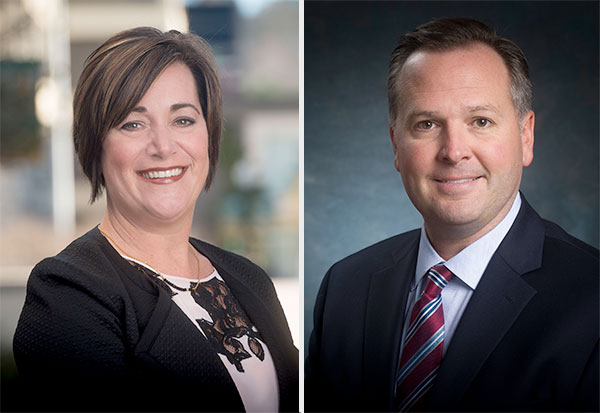 Kelly K. Nichols, O.D. and Jason J. Nichols, O.D.Clinical practice and research of dry eye relief in the University of Alabama at Birmingham School of Optometry is progressing with the development and release of new guidelines for diagnosis and treatment of dry eye, as well as the expansion of services offered by the UAB Dry Eye Relief Clinic.
Kelly K. Nichols, O.D. and Jason J. Nichols, O.D.Clinical practice and research of dry eye relief in the University of Alabama at Birmingham School of Optometry is progressing with the development and release of new guidelines for diagnosis and treatment of dry eye, as well as the expansion of services offered by the UAB Dry Eye Relief Clinic.
“With July being Dry Eye Awareness Month, the UAB School of Optometry and Dry Eye Relief Clinic are honored to be partners in global efforts to raise awareness of dry eye,” said Kelly K. Nichols, O.D., professor and dean of the UAB School of Optometry.
Kelly Nichols and Jason J. Nichols, O.D., professor in the UAB School of Optometry and UAB associate vice president of research, were part of the Tear Film and Ocular Surface Society steering committee that developed the report on the Dry Eye Workshop II, published in The Ocular Surface journal. The objectives of the TFOS DEWS II were to update the definition, classification and diagnosis of dry eye; critically evaluate the epidemiology, pathophysiology mechanisms and impact of this disorder; address its management and therapy; and develop recommendations for the design of clinical trials to assess pharmaceutical interventions for dry eye treatment.
Through ongoing research in the UAB School of Optometry, physicians around the world learn how to better diagnose and treat dry eye disease. UAB currently has 10 dry eye-related research projects to further develop guidelines such as these put out by the TFOS and to treat patients clinically.
“Translating research into clinical care is an important goal of my five-year National Eye Institute grant to study the lipid layer of tears in patients with dry eye,” Jason Nichols said. “A better understanding of the complex tear film can lead to new treatments. We look forward to partnering with the Dry Eye Relief Clinic to recruit participants for clinical research studies.”
The UAB Dry Eye Relief Clinic has expanded its services to offer the full scope of diagnostic devices and medical treatments, including in-office procedures with the device LipiFlow, which helps open and clear blocked glands to allow the body to produce lipids or oils needed for the tear film. The device is one of only a few in the state and the only FDA-approved treatment for meibomian gland dysfunction, a common cause of dry eye disease.
“Dry eye is more than just a symptom,” said Jillian Ziemanski, O.D., clinical assistant professor in the UAB School of Optometry, who has spearheaded the development and expansion of the clinic. “It’s actually an inflammatory disease of the eye’s surface. Many patients think dryness is normal, but it is not.”
The UAB Dry Eye Relief Clinic offers a specialized approach to better understand the factors contributing to a patient’s disease and developing a more personalized management plan to provide relief.
“Dry eye may progress in many patients,” Ziemanski said. “With electronic device use and a younger age of onset, we need to be proactive in management to prevent a lifetime of ocular discomfort and potential vision changes.”